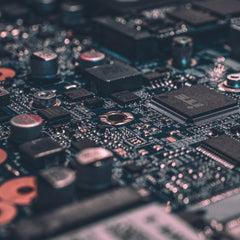Deciding which type of wireless connection to implement in a device can be a cumbersome task. Each solutions allows for communication without sorting through an abundance of wires. The 900MHz, Wi-Fi, or Bluetooth Low Energy (BLE) wireless communication tools can be used to resolve limitations in budget as well as situations where wire placement is troublesome. None of these connections are necessarily any worse than the other, but some connections are better suited for certain environments and uses. The specifications and practical applications for each wireless connection are as followed:
900MHz: 900MHz is part of the UHF radio spectrum and allows for communication in a very local setting. This issue with radio waves is that they can be subject to some interference, so it may be beneficial to check for similar and existing frequencies in potential environments, but a majority of the time it won’t be an issue. The radio-enabled wireless connection can have more range than 2.4 GHz Wi-Fi and has the ability to travel through walls and objects with much more success due to its low frequency. This wireless option is the most applicable if efficient and quick communication is needed. 900MHz can typically communicate with desired devices in under ten seconds.
Wi-Fi: Wi-Fi is a very practical solution if instantaneous communication is not a concern. Most devices that operate with Wi-Fi are able to operate while offline and can be updated periodically via the internet. Wi-Fi typically has a greater range than BLE, but consumes a good amount of power while operating. Setting up a Wi-Fi connection is also more tedious than it may be with BLE or 900MHz. If security is a concern, Wi-Fi has a more complex encryption than the other options. Wi-Fi removes the locational restraints and allows for greater command over a network of interconnected devices.
BLE: BLE connection is very useful when communication is occurring between multiple devices that are near each other. The speed and data transfer rates of BLE are not great, making it best suited for low-bandwidth use. BLE devices consume low amounts of energy; this can be beneficial for long-term use as operational costs will be very low. This connection assimilates very well with consumer applications of the Internet of Things.
Before any wireless connection is used in a device, there are several factors that need to be reviewed in order to maximize functionality. Manufacturers need to consider the context in which the wireless communication will be occurring. For instance, elements such as speed, signal range, reliability and accessibility, power consumption, security, and user-friendliness are some of the critical things to consider when analyzing applicability of a wireless connection.






